14. Ala Kijiz
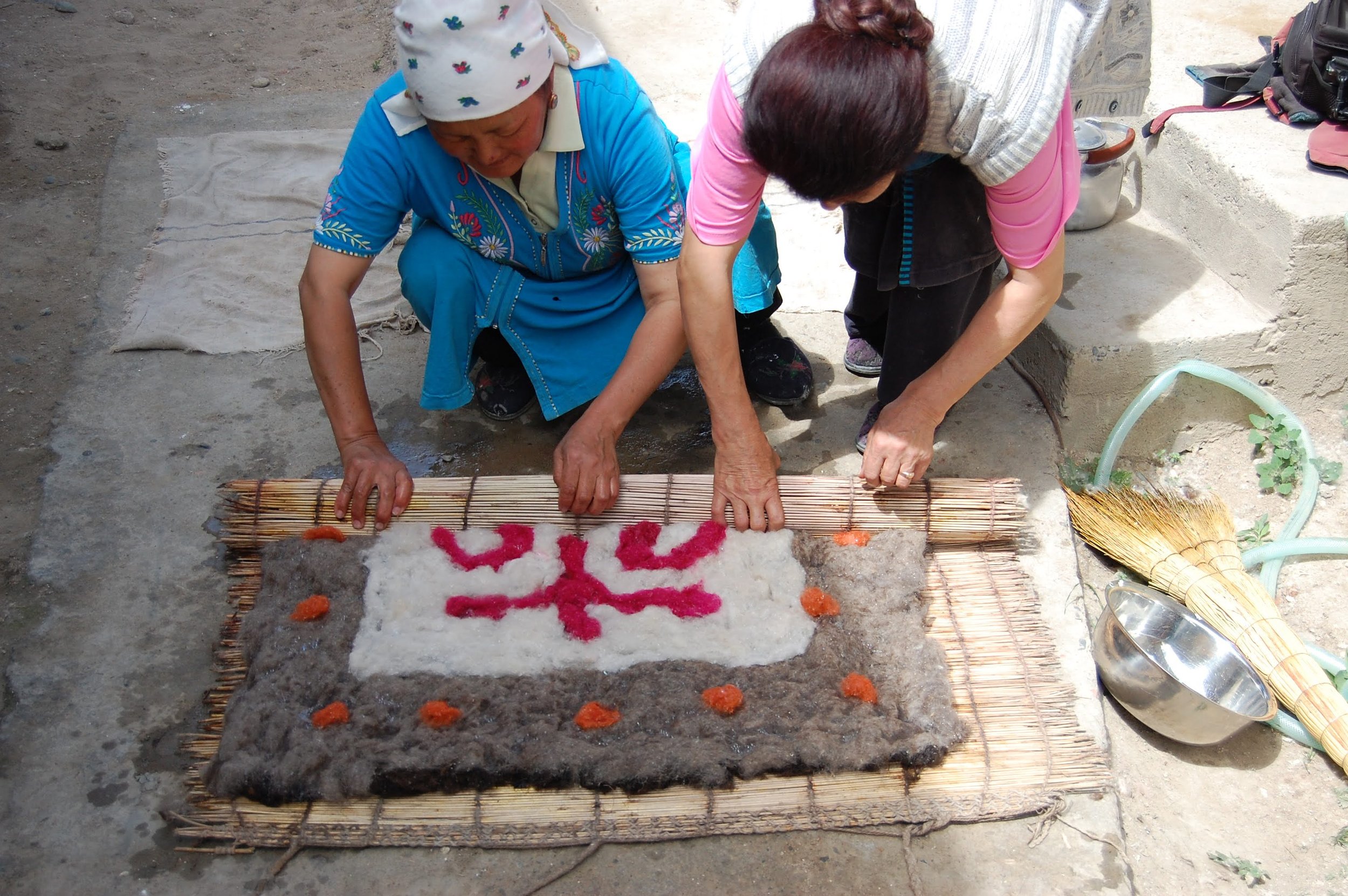
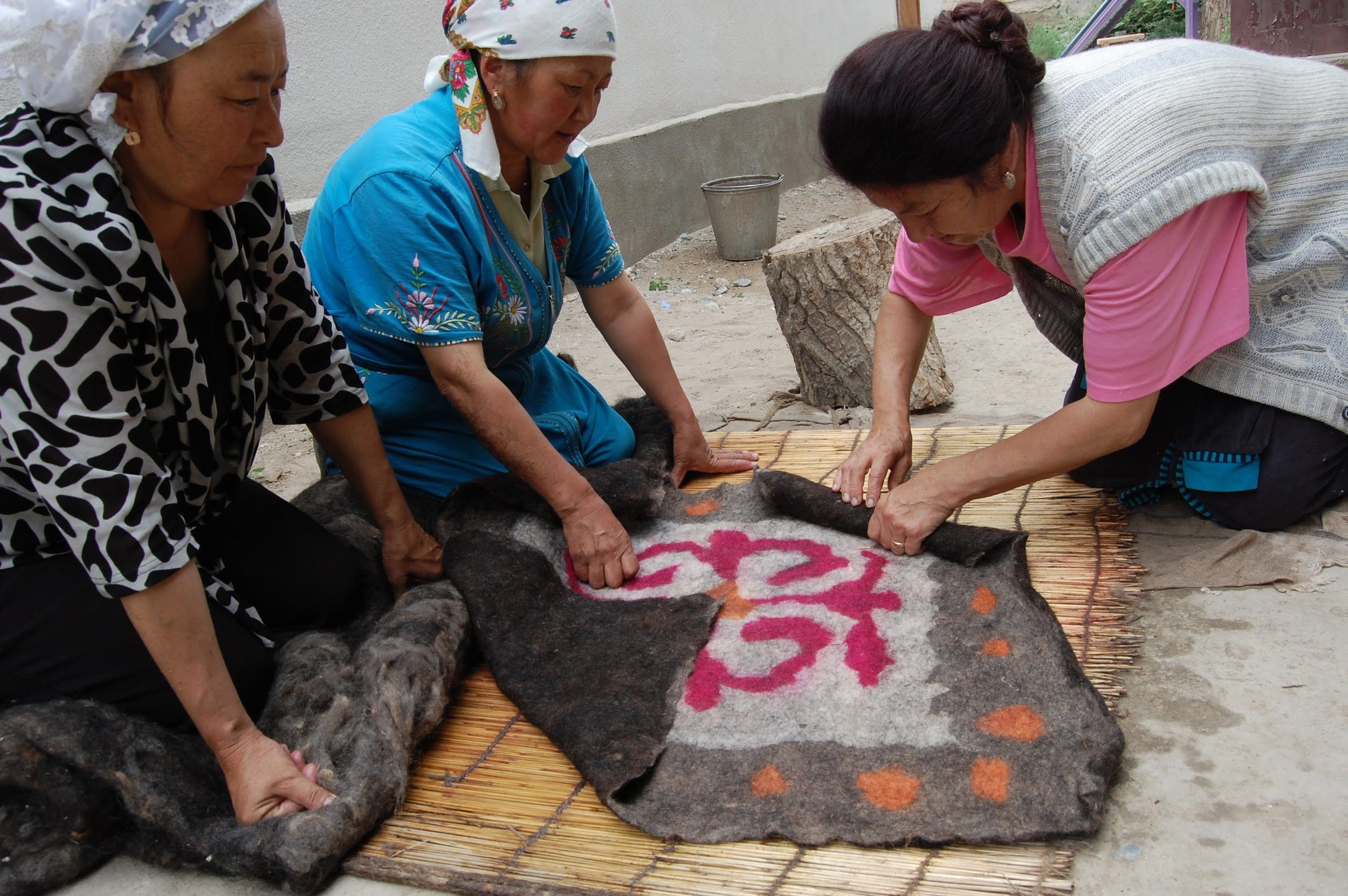
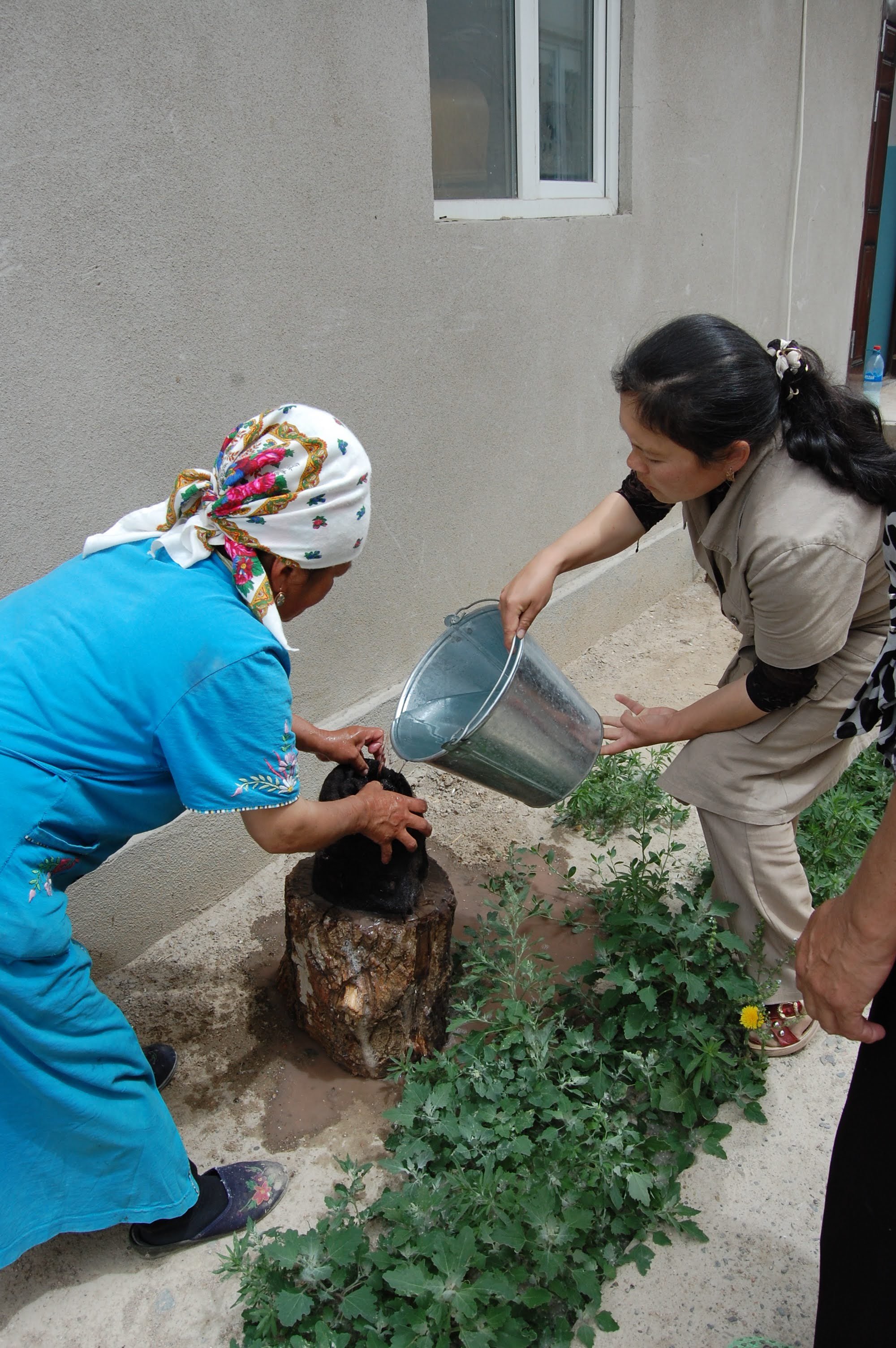
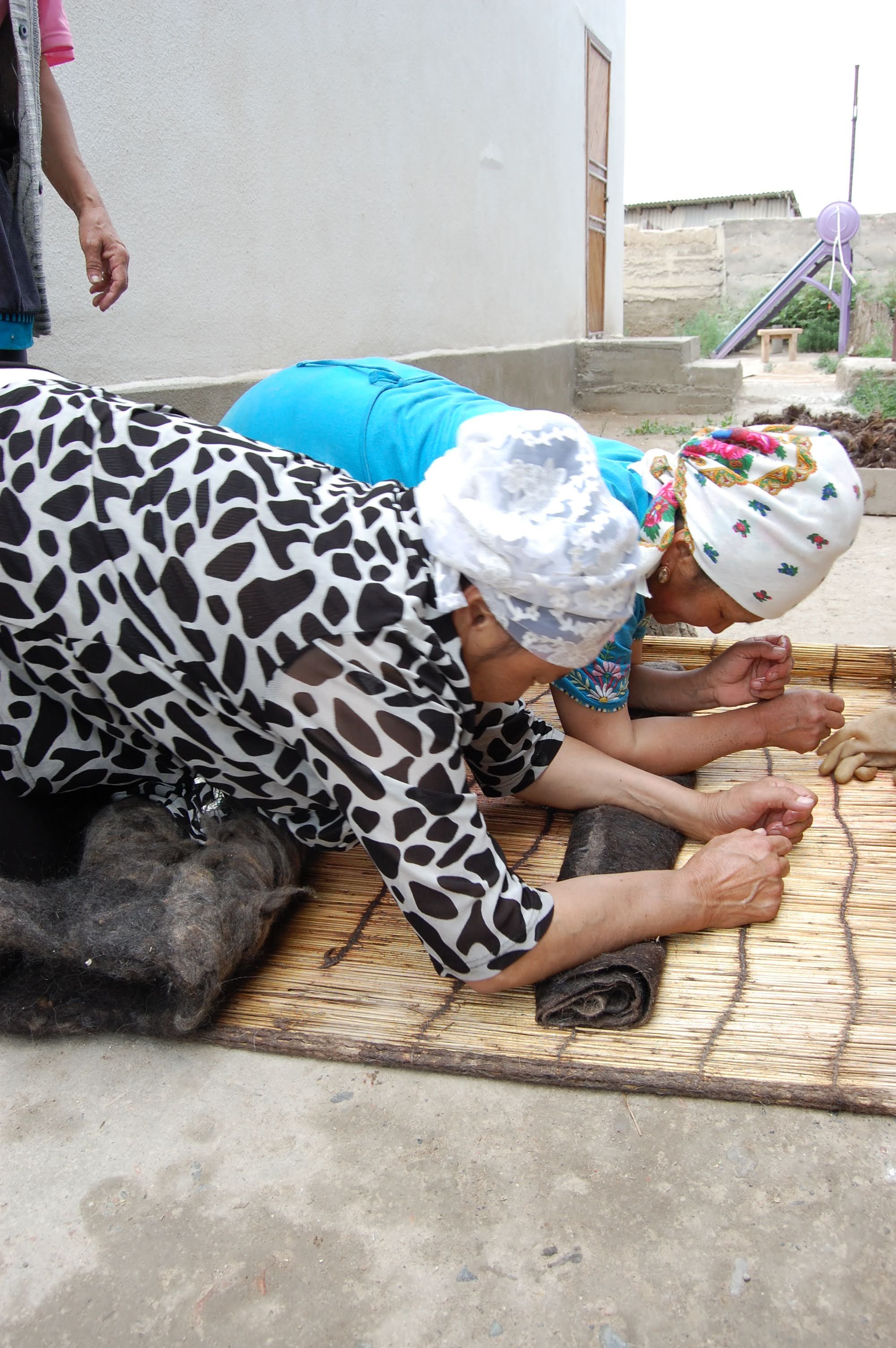
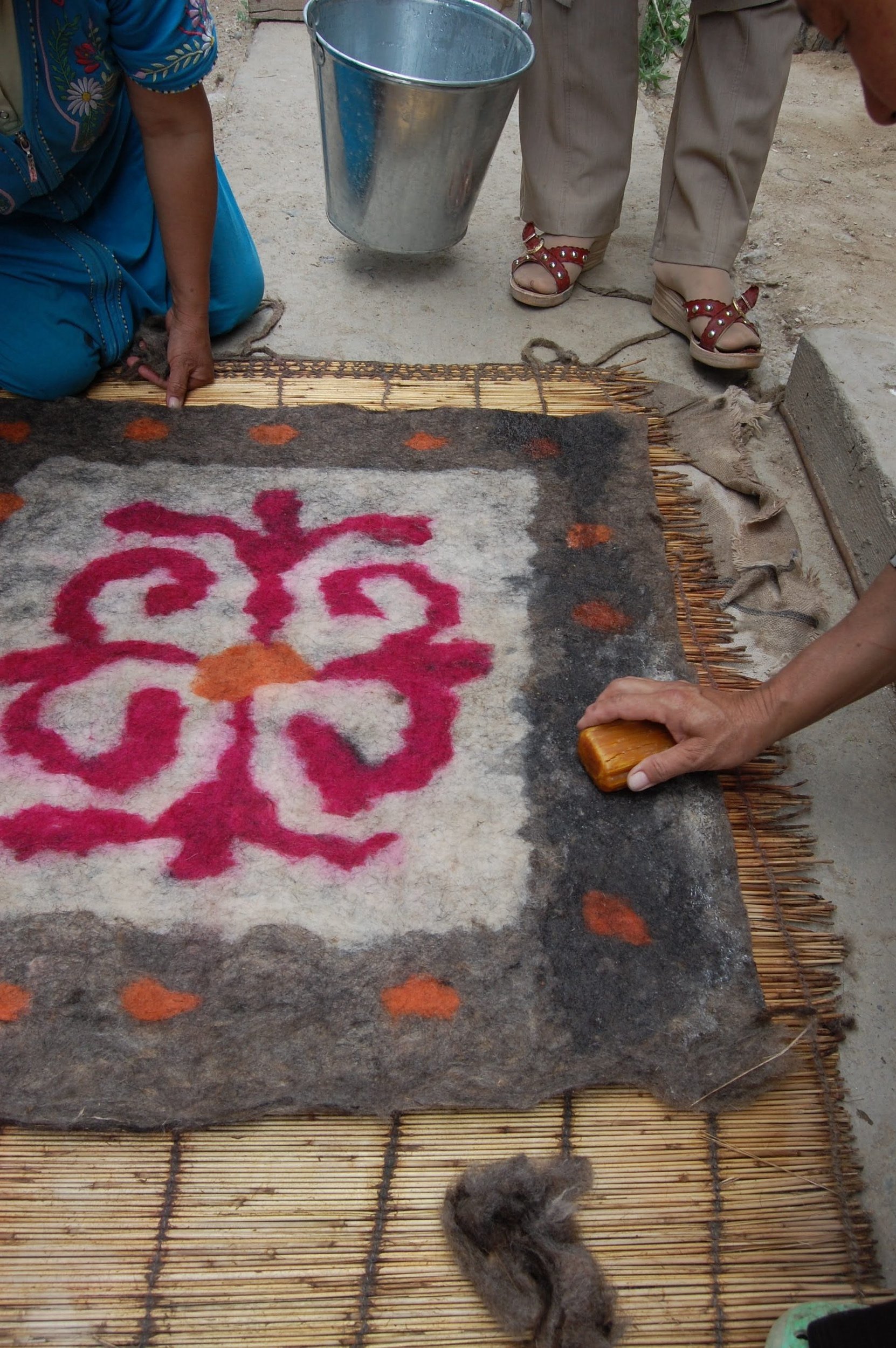
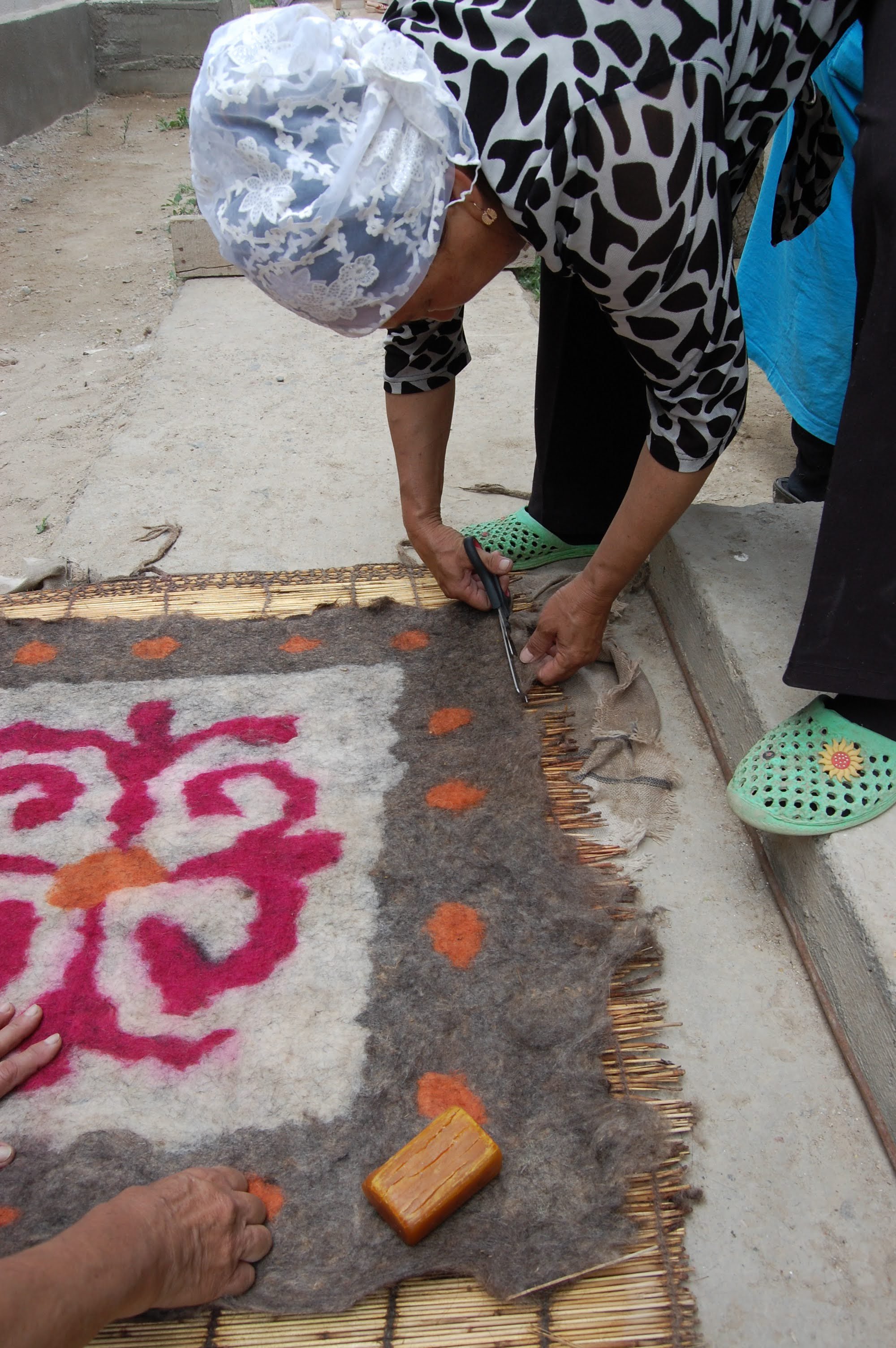
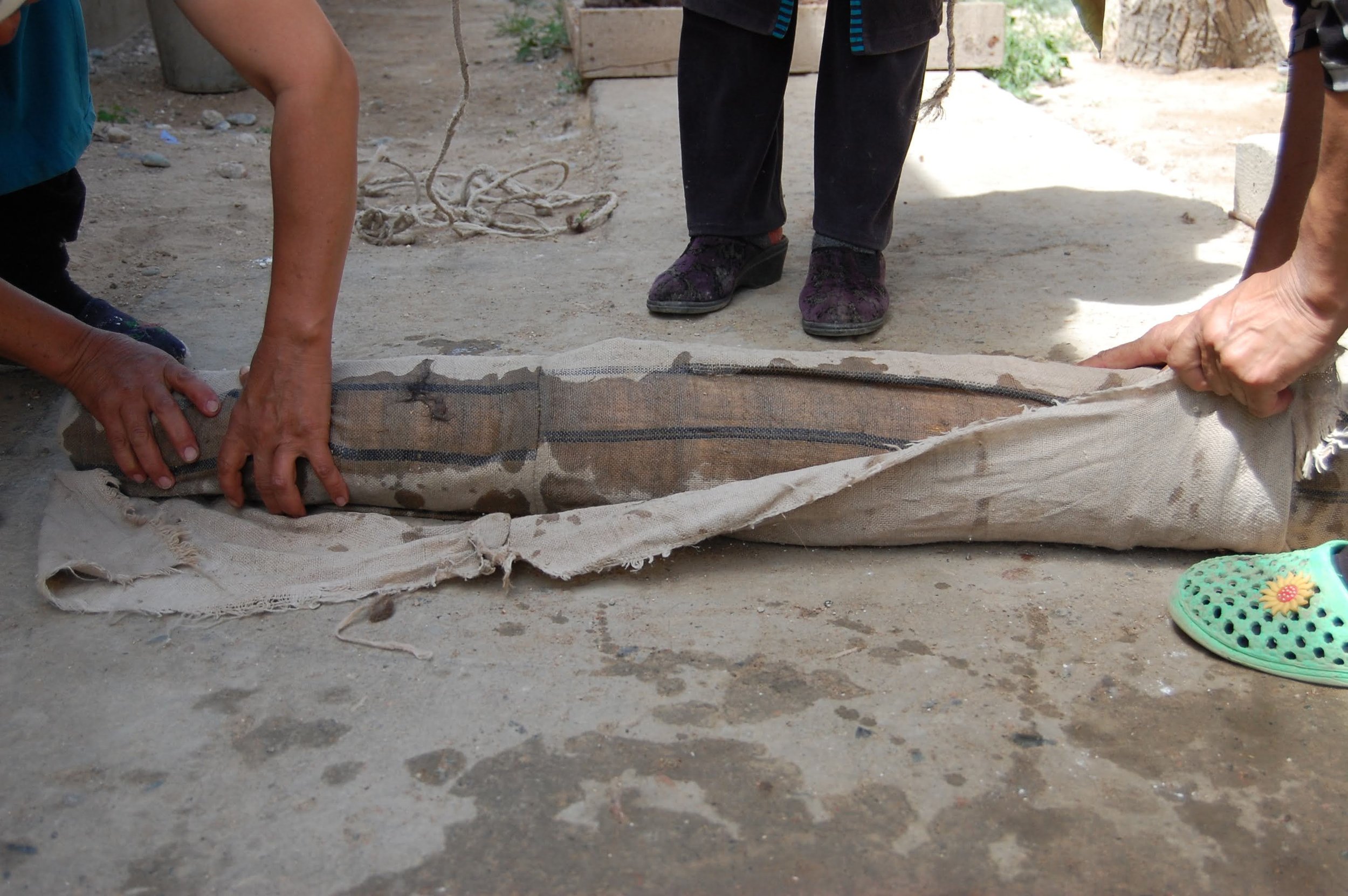
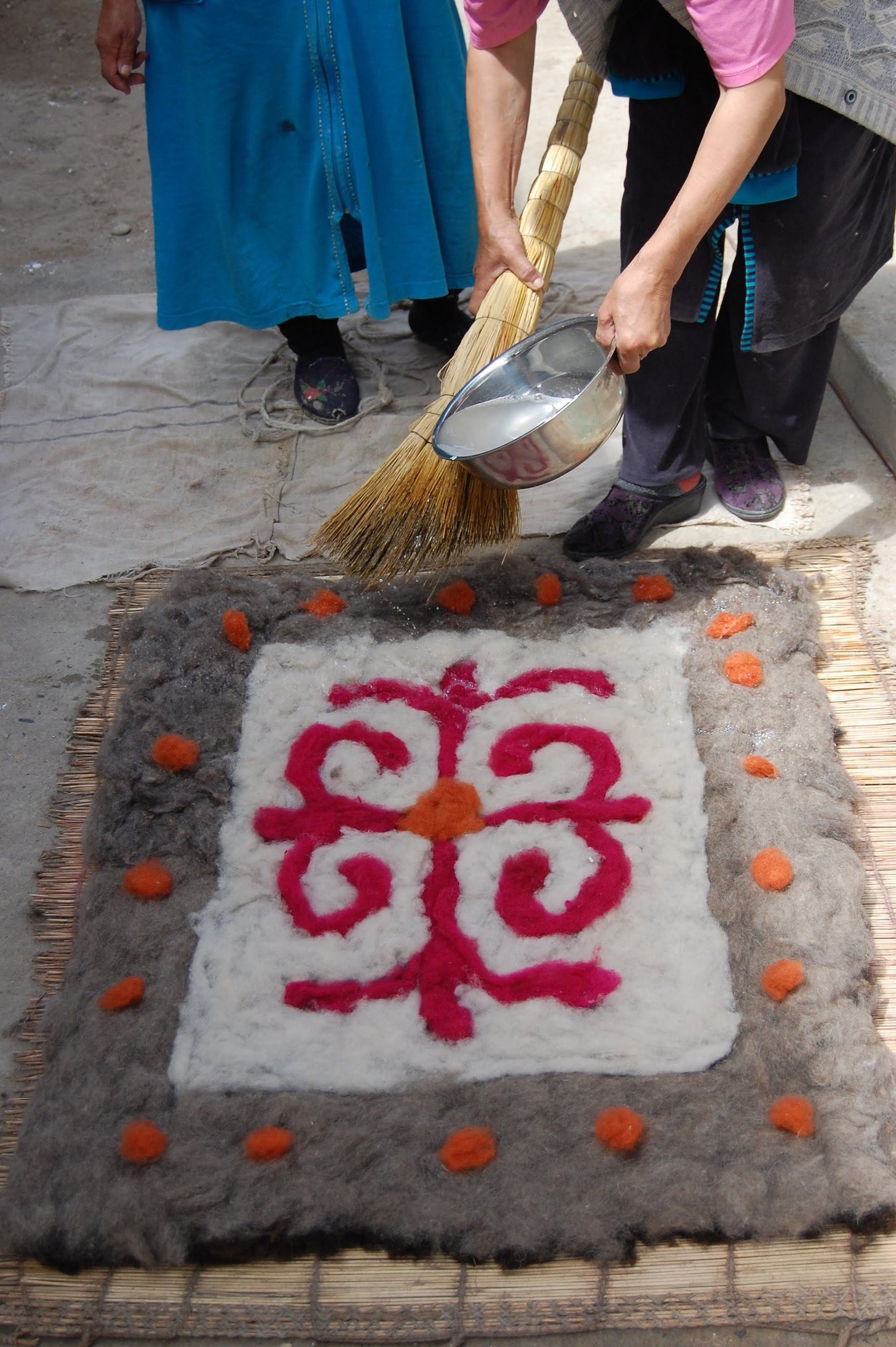
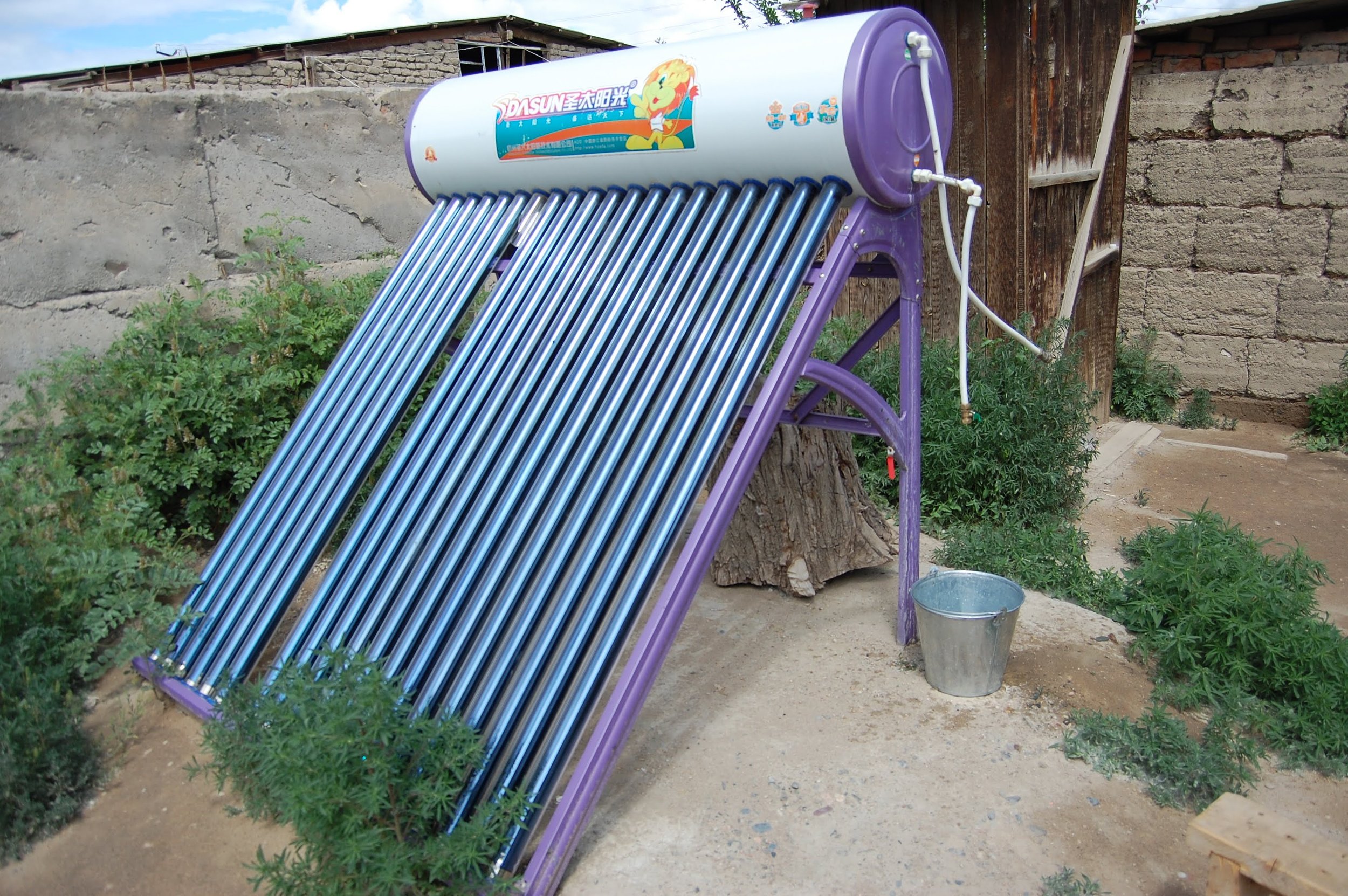
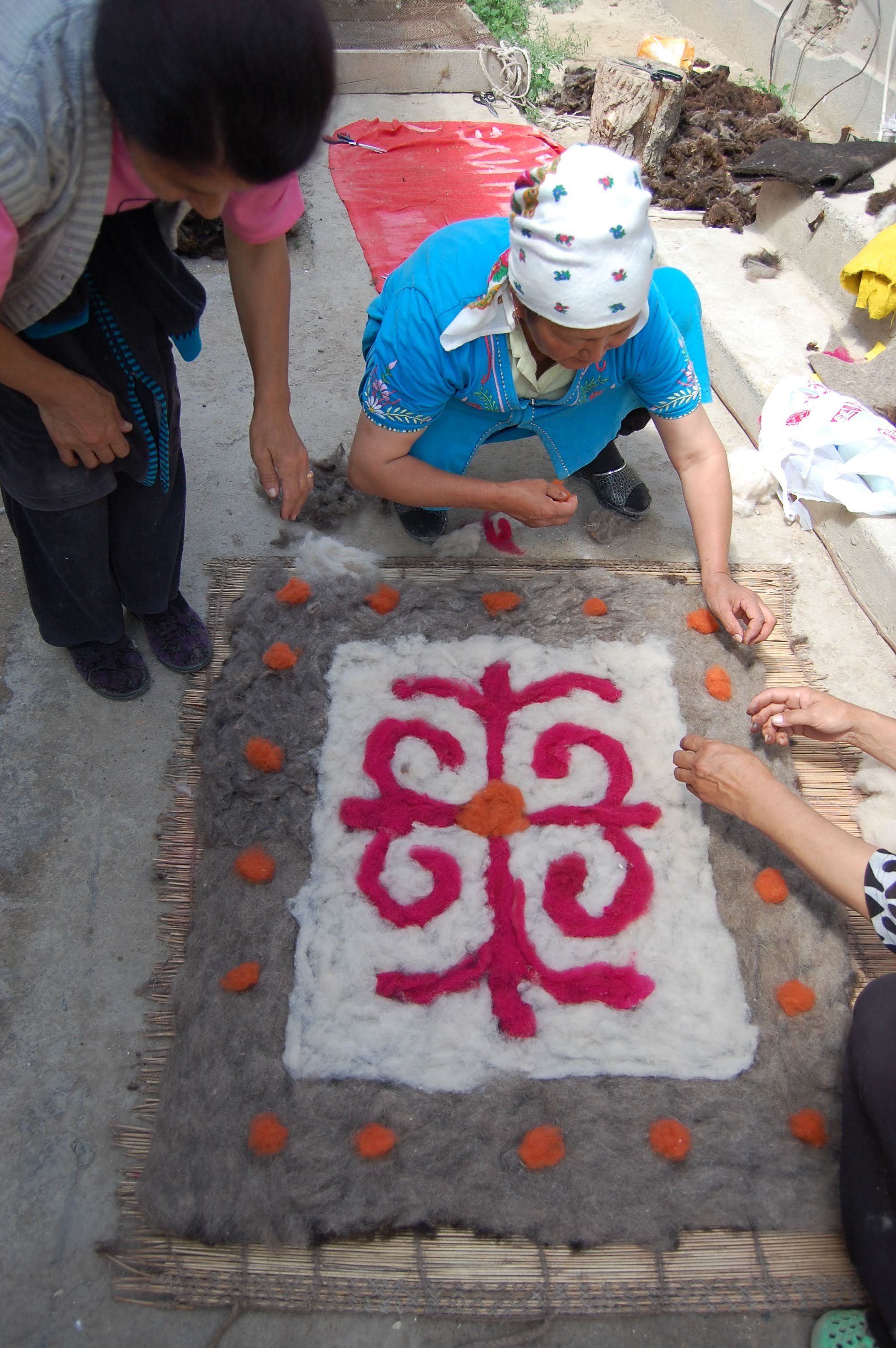
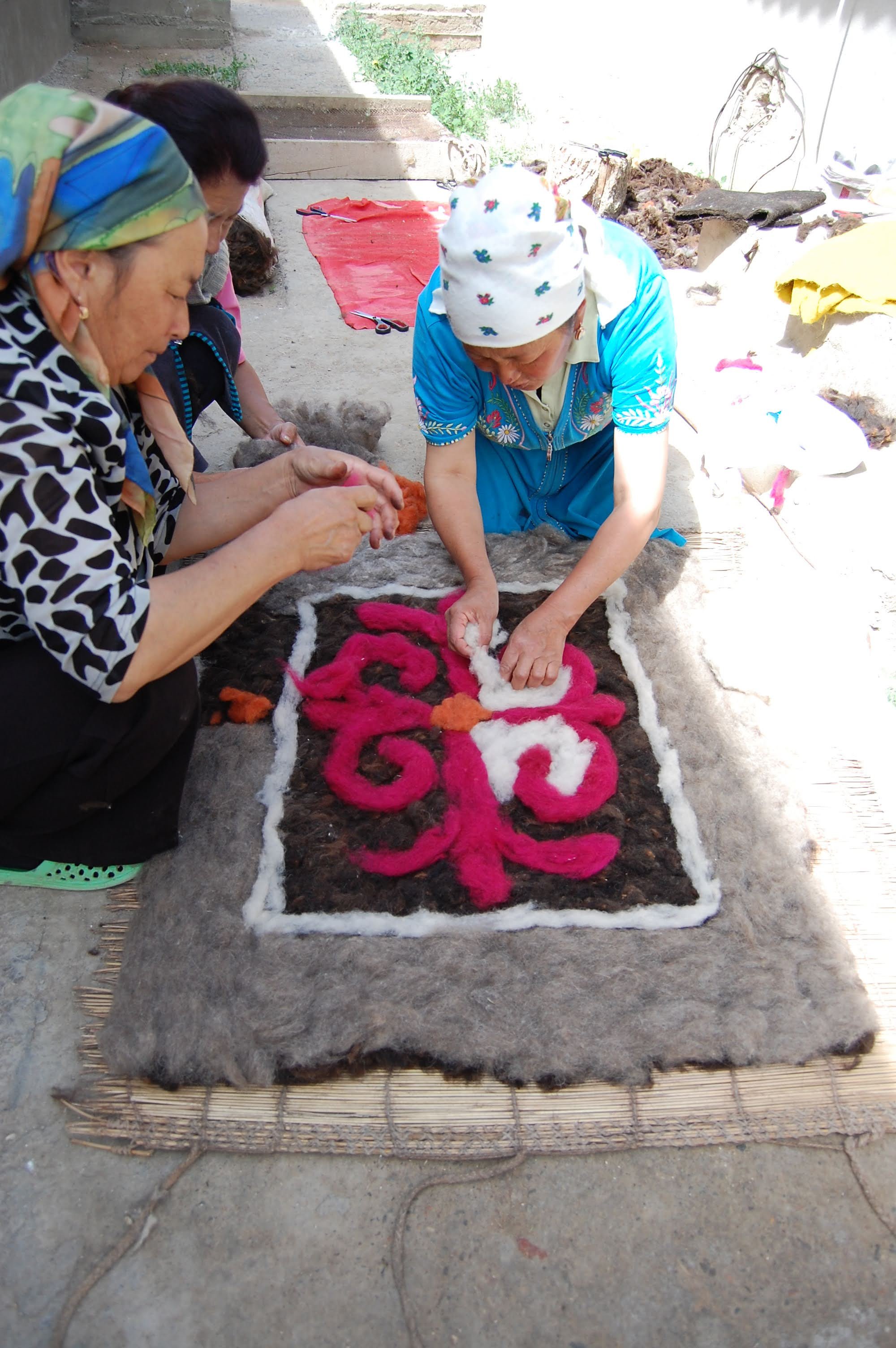
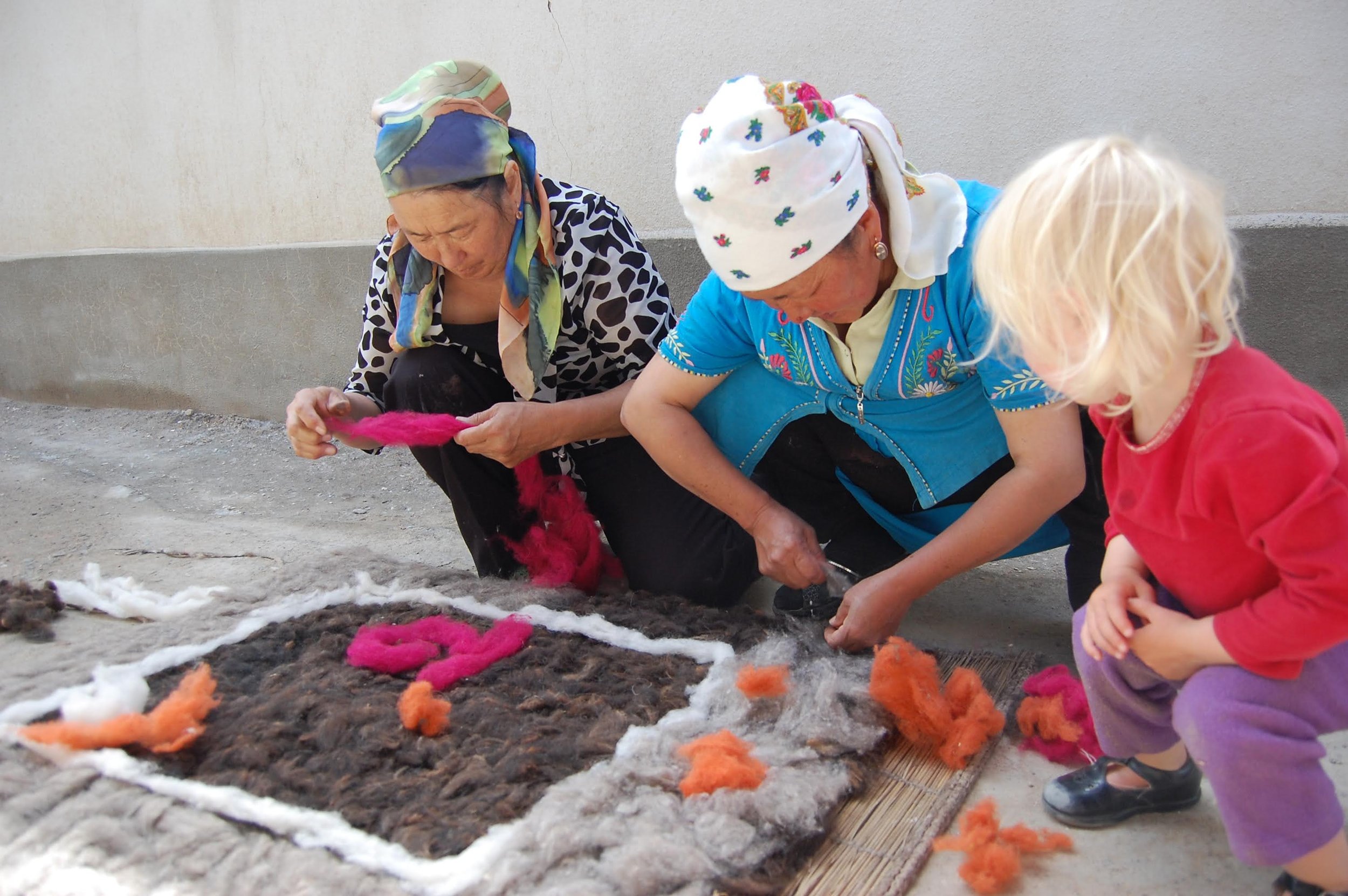
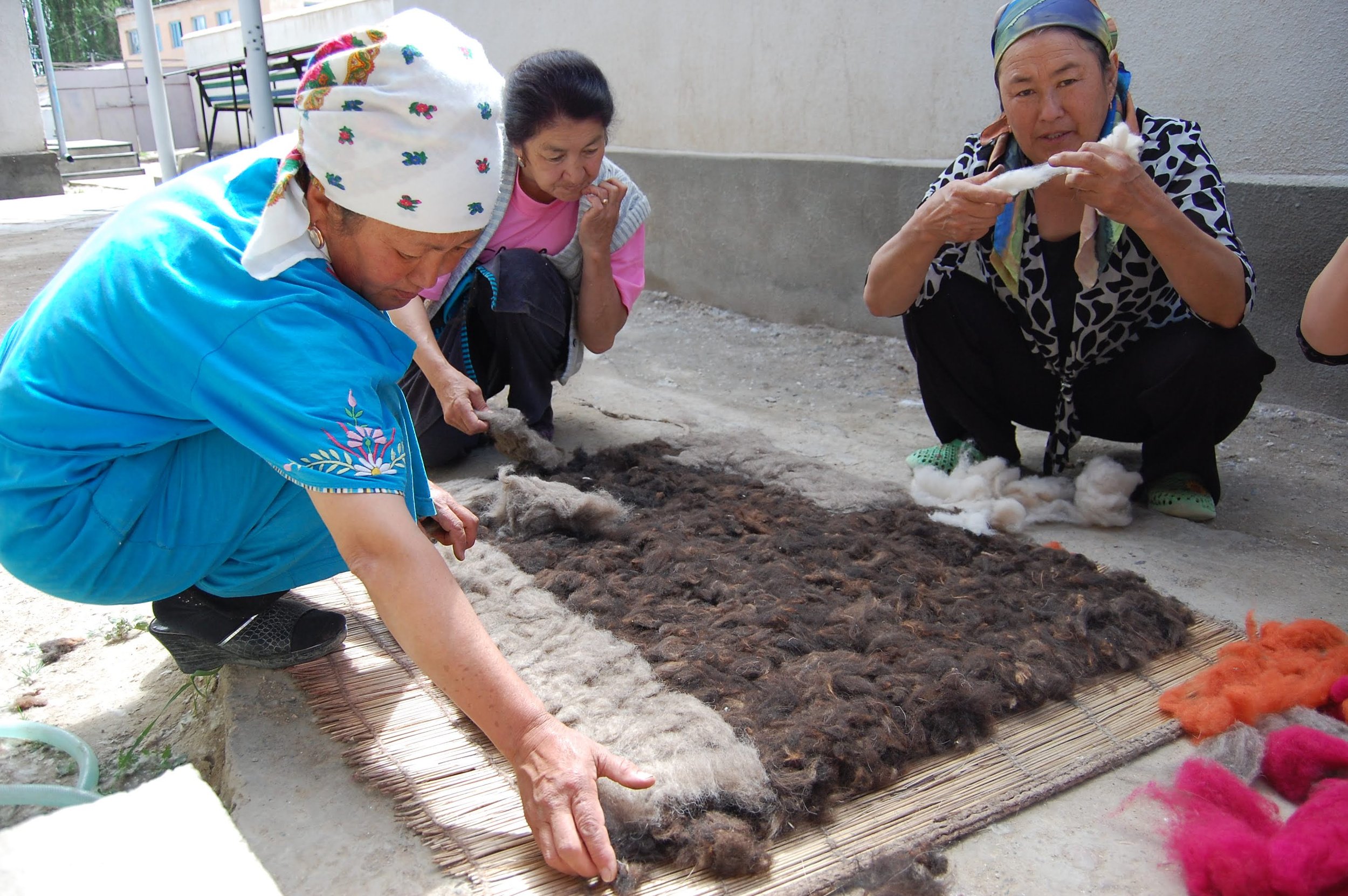
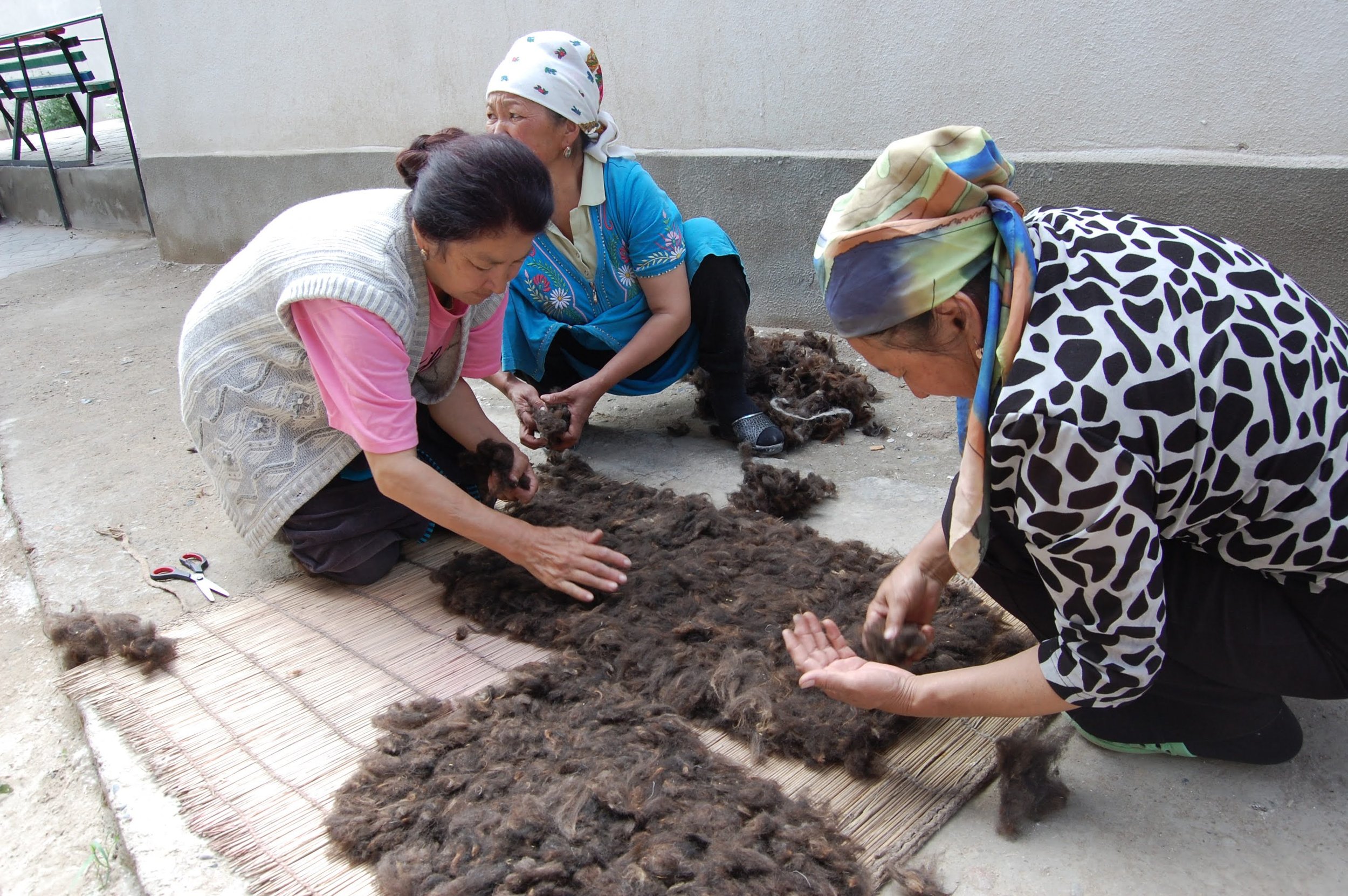
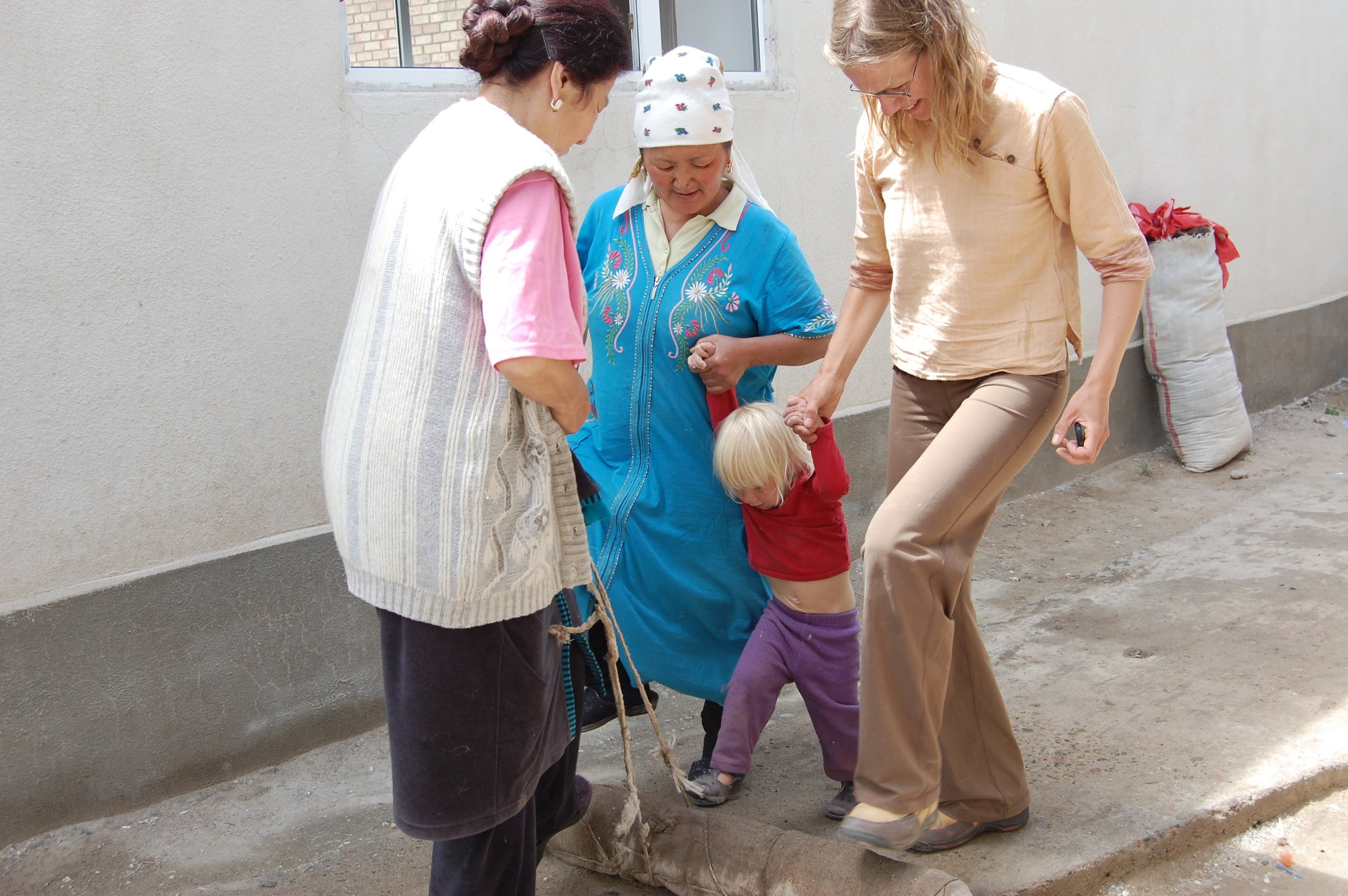
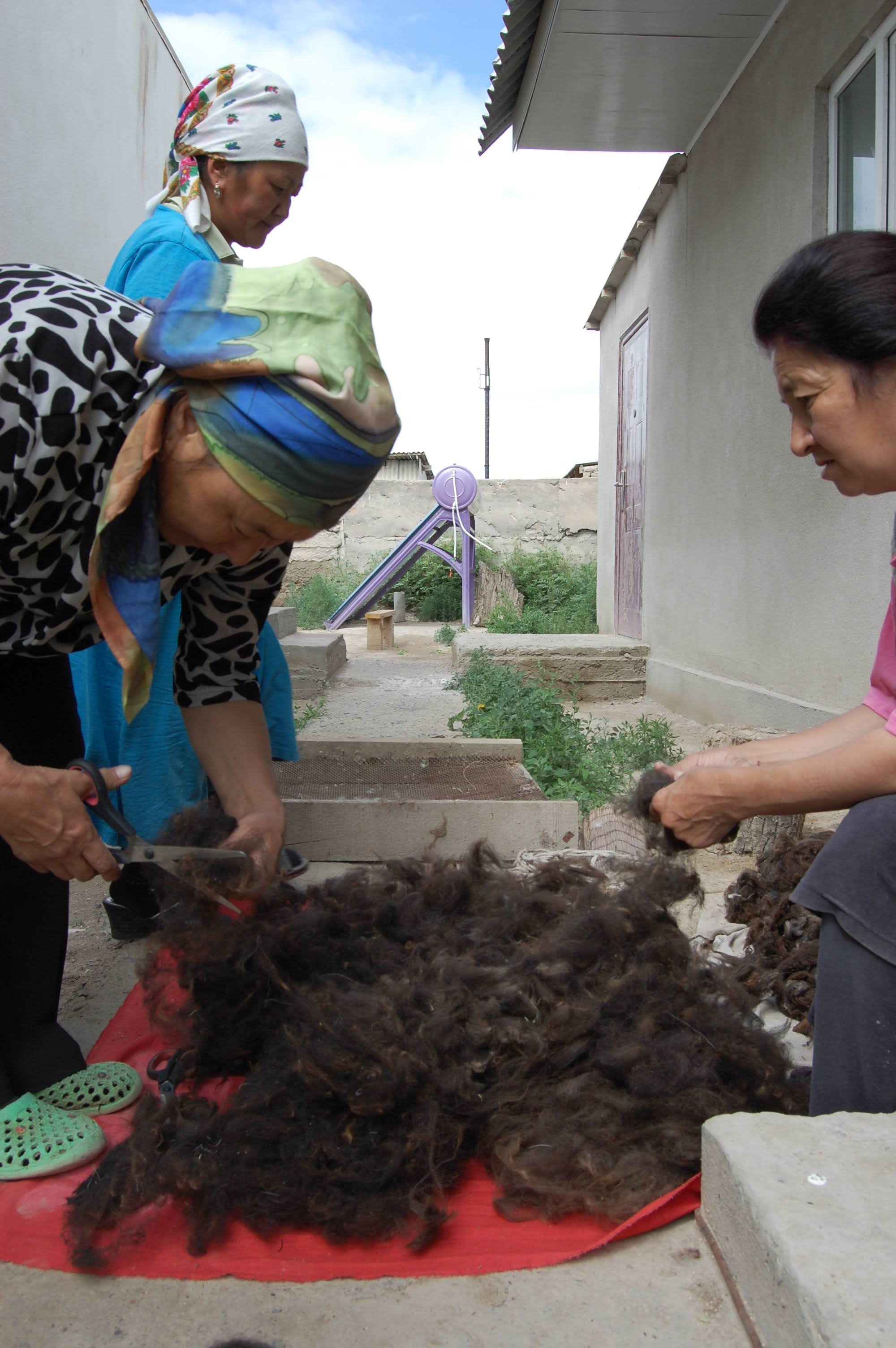
The next morning, we arrived at Altyn Kol to learn the ancient art of making ala kijiz (soft felt carpet without stitching). The women were separating the fibres with their hands and cutting the longer fibres. Women making felt products for Altyn Kol use mainly Merino wool. Felt is made by a process called wet felting, where wool fibre is stimulated by friction and lubricated by moisture (usually soapy water). The fibres move at a 90 degree angle towards the friction source and then away again in effect making little "tacking" stitches.
Felt may be the oldest fabric known to man, and there are many references to felt in ancient writings. Since felt is not woven and does not require a loom for its production, ancient peoples were able to easily make it. Some of the earliest felt remains were found in the frozen tombs of nomadic horsemen in the Siberian Tlai Mountains and dated to around 700 B.C. These tribes made clothing, saddles and tents from felt because it was strong and resistant to wet and snowy weather.
To produce the ala kijiz, a double thick layer of dark wool was laid out on a chij surface evenly by pulling out wool once horizontally and then vertically. Then, wool that has been especially prepared by softening and separating is used for the purpose of designing motifs (patterns). Ala kijiz patterns are designed and different coloured wool is laid to fill the inside of the pattern shapes. Black or brown wool is used as a background while pattern lines are designed out of various coloured wool. The piece was approximately 3ft by 4ft long.
For the patterns they choose the ram horns which represent prosperity and the eagle talons which represent the teachings of traditions being passed down from grandmother to granddaughter. Boiled water from their solar hot water heater was then sprinkled on the wool using a little broom and the chij is immediately rolled and tied with a rope lengthwise and in width. The chij was then covered with a cotton cloth to protect it. Long rope was tied to the middle of the rolled chij. Then one of the ladies pulled it to and fro and the rest of us beat the chij by foot.
After 15 minutes of stomping, more boiling water with soap was added. It was then unrolled, cut around the edges and more water and soap was rubbed in. Next, it was rolled up and this time the elbows and forearms were used to continue the felting process. They said this technique gave the felt more strength. The corners were also rolled up and felted, continuously turning the felt. It was also stretched in different directions to make it a more uniform square. Lastly, it was rolled into a bundle and more hot water and soap were added and wrung out.
Ala kijiz patterns have no clear lines, and its colours are slightly mixed up overlapping on the borders and look faded. It takes a short time to produce an ala kijiz (it took us two hours) but it doesn’t last as long as a shadrak. To prolong the life of an ala kijiz it is recommended to re-felt with boiling water every 2-3 years.
